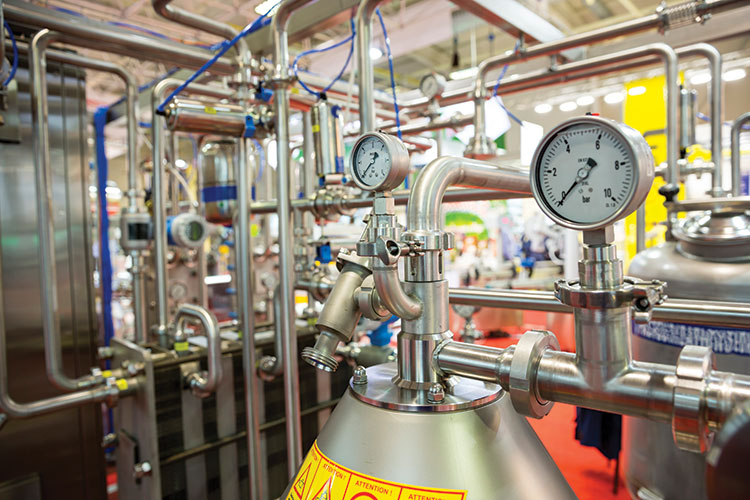
When humans ingest food contaminated with the bacteria Listeria, severe health consequences, including death, can take place. This bacteria causes illness most often among pregnant women and their newborns, adults aged 65 years or older, and people with weakened immune systems.
Pasteurization has been shown to limit these food-related risks; pasteurized milk has fewer harmful bacteria such as Listeria, salmonella, E. coli, and Campylobacter, and parasites such as Cryptosporidium. That’s because pasteurization kills these bacteria, making the process one of the greatest health victories in the past century.
In the United States, listeriosis outbreaks have been linked to soft cheese made from unpasteurized milk, and were commonly reported from 1998 to 2015 through the Centers for Disease Control and Prevention (CDC) National Outbreak Reporting System. However, no multistate listeriosis outbreaks were linked to unpasteurized milk during that time.
“Because not all cases of foodborne illness are recognized and reported, the actual number of illnesses associated with unpasteurized milk likely is greater,” pointed out Megin Nichols, D.V.M., a speaker from the CDC at the National Mastitis Council annual conference. “However, implementation of new technology, such as whole genome sequencing (WGS), enables new opportunities for the CDC to detect illnesses and outbreaks.”
To facilitate listeriosis outbreak detection, a multiagency effort began in 2013 to perform whole genome sequencing on all Listeria monocytogenes isolates from patients, food, and the environment. Outbreak data is obtained through characterization of bacterial isolates through whole genome sequencing, and when combined with patient exposure data, can help pinpoint contaminated food products.
It’s illegal
In November 2015, several unpasteurized dairy products from “Dairy Farm X” in Pennsylvania were distributed to attendees of a conference in California. In California, it is unlawful for any person to sell, give away, deliver, or knowingly purchase or receive dairy products produced on a dairy farm that does not hold a permit issued by the California Department of Food and Agriculture or a county-approved milk inspection service.
“Additionally, under federal regulations, it is unlawful to ship unpasteurized milk or unpasteurized milk products in interstate commerce,” added Nichols to those attending the Savannah, Ga., meeting. “There are a few exceptions, including one exemption for certain standardized cheeses, aged for a minimum of 60 days at a temperature of 35°F or above.”
Dairy Farm X distributed dairy products to the conference attendees but did not hold a California permit; therefore, local officials in Orange County, Calif., embargoed the unpasteurized dairy products from Dairy Farm X and sent samples for foodborne pathogen testing to the U.S. Food and Drug Administration (FDA). Listeria monocytogenes was isolated from a sample of unpasteurized chocolate milk.
On January 29, 2016, FDA informed CDC that the Listeria monocytogenes isolate from unpasteurized chocolate milk was genetically related to Listeria monocytogenes isolates collected from blood specimens from two ill patients in 2014. One patient lived in California, the other in Florida; the patient in Florida died.
Interviews regarding unpasteurized milk consumption were conducted with the California patient and through family-member surrogates for the Florida patient. CDC also contacted the Pennsylvania Department of Agriculture (PDA) for information regarding the origin and production of the unpasteurized dairy products embargoed at the conference in Anaheim, Calif.
There was a connection
The Listeria monocytogenes isolates from the two ill patients in 2014 were closely related genetically to those from unpasteurized chocolate milk produced by Dairy Farm X in Pennsylvania. The California patient reported consuming unpasteurized milk provided by a family member who purchased unpasteurized milk from Dairy Farm X through the same buyers’ club as the Florida patient’s family member. Not only was this milk not pasteurized, there is no record of temperature during the shipping process.
According to Nichols, “Adherence to good hygienic practices during and after milking can reduce, but not eliminate, the risk of milk contamination. The dairy farm environment is a reservoir for illness-causing germs.”
Nichols added, “No matter what precautions farmers take, and even if tests of unpasteurized milk come back negative, they cannot guarantee that their milk, or the products made from their milk, are free of all harmful germs.”
Legal in state
To be fair, unpasteurized milk sales are legal on-farm and in retail stores in Pennsylvania. A permit is required for the sale of milk, milk products, and manufactured dairy products within the state.
However, Dairy Farm X was not selling milk via a store or on-farm, but through a buyers’ club to out-of-state members. Therefore, Dairy Farm X was not required to have a permit by state law, and it was not inspected by the Pennsylvania Department of Agriculture. The farm was unlawfully shipping unpasteurized milk and unpasteurized milk products through interstate commerce.
CDC posted an outbreak announcement online because of concern that contaminated unpasteurized milk and other unpasteurized dairy products from Dairy Farm X were still being sold across the United States and could result in additional Listeria monocytogenes illnesses. The announcement recommended that people drink and eat only pasteurized dairy products, including milk, soft cheese, ice cream, and yogurt.
Science worked
This is the first documented multistate listeriosis outbreak linked to unpasteurized milk detected in the United States . . . regrettably, it likely will not be the last. Detection of illness outbreaks resulting from enteric pathogens in unpasteurized milk will continue to occur using whole genome sequencing.
The greater discriminatory power of whole genome sequencing allows identification of isolates from multiple states that might share a common source, and it provides more confidence in the epidemiologic associations between isolates from humans and isolates from food products.
Pathogens in unpasteurized milk and dairy products made from unpasteurized milk can pose severe health risks, including death, for people at higher risk for foodborne illness.
This is preventable.
There is a remedy.
Mitigation of illnesses and deaths resulting from pathogens in milk has been achieved through pasteurization. Therefore, the CDC continues to recommend that people, especially those at high risk for severe illness, drink and eat only pasteurized dairy products.








